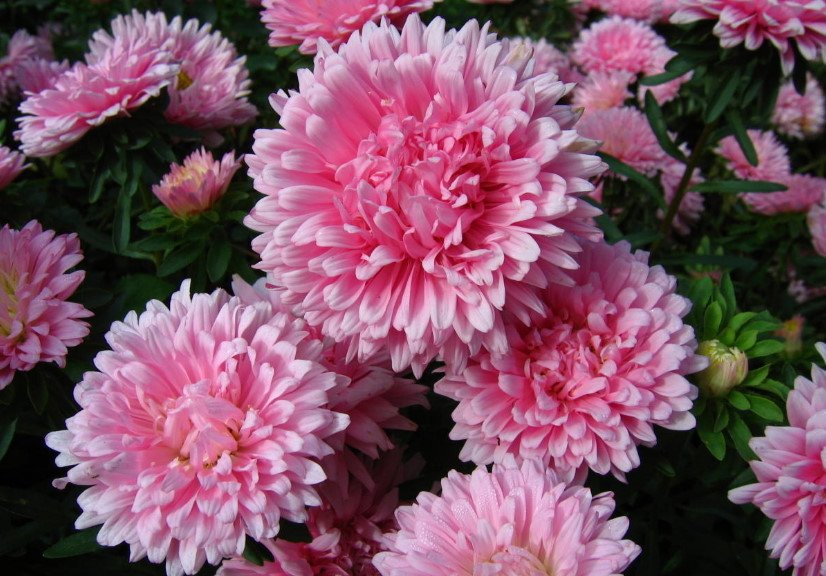
- Coreopsis tinctoria;
- What Coreopsis likes ;
- What Coreopsis doesn’t like ;
- The placement of Coreopsis in the country;
- Cosmos bipinnatus;
- What Cosmos likes ;
- What Cosmos doesn’t like ;
- The placement of Cosmos in the country;
- Pelargonium zonale;
- What Pelargonium likes;
- What Pelargonium doesn’t like ;
- The placement of Pelargonium in the country;
- Salvia splendens;
- What Salvia likes ;
- What Salvia doesn’t like ;
- The placement of Salvia in the country;
- Phlox paniculata;
- What Phlox paniculata likes ;
- What Phlox paniculata doesn’t like ;
- The placement of Phlox paniculata in the country;
- Zinnia elegans;
- What Zinnia elegans likes ;
- What Zinnia elegans doesn’t like;
- The placement of Zinnia in the country;
August is not just asters. Some are now luxuriously blooming petunias, some-chicory, perennial flax. And how many beautiful plants are now happy with the flowering of all users of the site! Hundreds, thousands, and among them-roses, clematis, cannas…
And today we are going to carry on where we left off last time in article 10 of the Plants Blooming in August. Part 1
Coreopsis tinctoria
Coreopsis tinctoria is a Sunny, very cheerful annual plant native to North America.

Height-0,2-1,2 m, width-30-45 cm Leaves are narrow, up to 10 cm long Inflorescences-baskets up to 5 cm in diameter, yellow, orange, red-brown; bloom until September. With timely pruning (at a height of 10 cm from ground level) of faded inflorescences, good watering and fertilizing with complete mineral fertilizer, you can extend the flowering until late autumn frosts.
What Coreopsis likes
- bright, Sunny location;
- dry-drained fertile soil.
What Coreopsis doesn’t like
- overwetting;
- heavy soil, dense plantation.
The placement of Coreopsis in the country
It is spectacular in the landscape flower beds of country style, where with their relatives from the family Asteraceae will charge all around with positive energy and good mood. He’s good in mixed borders, in pots on open balconies, terraces.
4 facts about coreopsis that you might not know:
- the people Coreopsis is often called the Golden rain;
- the generic name is associated with the similarity of coreopsis and bug fruits: koris-bug and opsis-similarity;
- the specific name of the dye coreopsis this for a reason: it gives the tea beautiful color;
- the culture is grown and perennial Coreopsis grandiflora and its varieties, and C. lanceolata.
Cosmos bipinnatus
Cosmos bipinnatus is a delicate annual plant with a distinctive scent to a height of 1.5 m and width up to 45 cm. he Hails from Mexico.
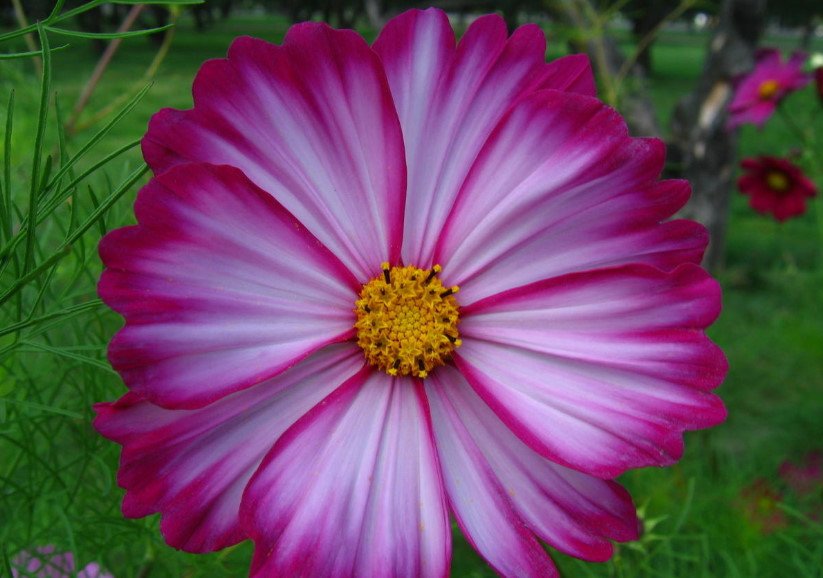
The leaves are delicate, with a length of 30 cm Inflorescences-baskets with a diameter of 8 cm, white, pink, cream, purple in color, with a yellow center, and bloom until frost. Gives self-seeding.
What Cosmos likes
- light;
- drained soil.
What Cosmos doesn’t like
- waterlogging of the soil;
- excess fertilizing (will give a powerful Bush, but will not bloom).
The placement of Cosmos in the country
It’s luxurious in a rustic flower gardens, Moorish lawns.
2 facts about Cosmos that you might not know:
- translated from the Greek name of the plant means decoration. We often call it space, beauty;
- in addition to Cosmos bipinnatus, recently won the hearts of Amateur gardeners Cosmos sulfureus.
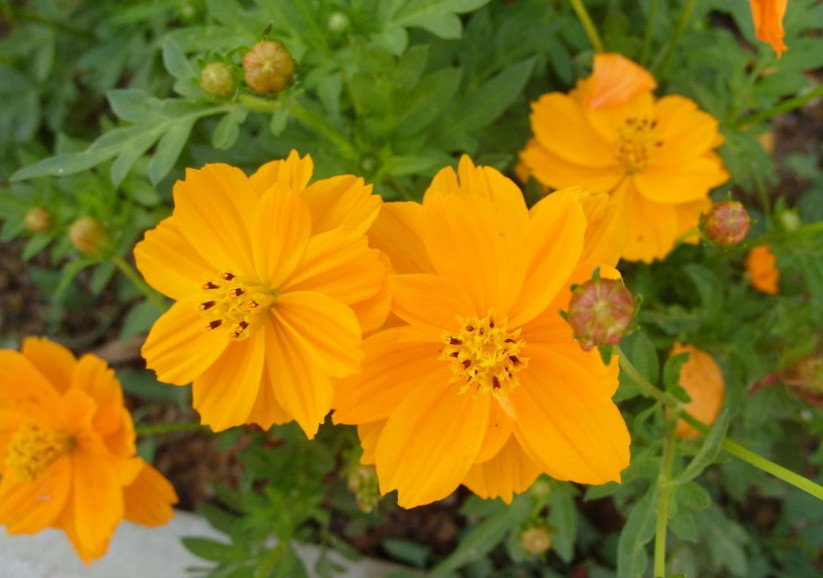
Height it is only 30-45 cm, more compact; orange flowers unusually good!
Pelargonium zonale
In culture Pelargonium zonale often grown as a seasonal plant, using hybrids with flowers of a variety of colors.
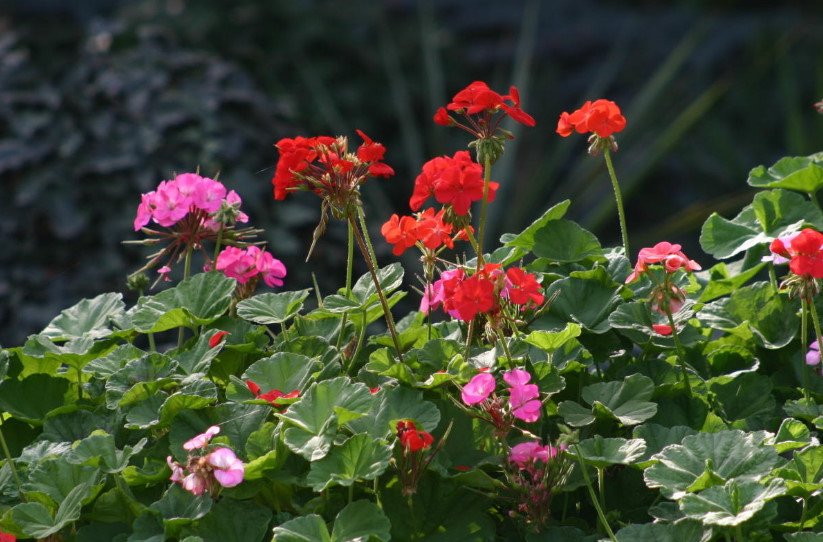
What Pelargonium likes
- bright location;
- loose fertile soils;
- regular watering;
- additional fertilizing;
- topping of the shoots, which makes it more magnificent.
What Pelargonium doesn’t like
- waterlogging of the soil;
- drought.
The placement of Pelargonium in the country
It is good in flower beds, on discounts, in pots and containers. Perfectly support the bright rural flavor in the country.
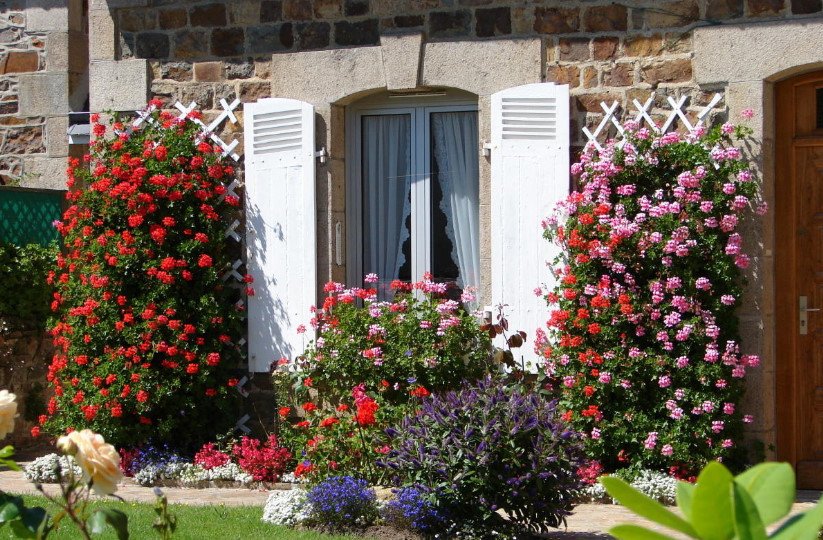
4 facts about pelargonium you might not know:
- the generic name of pelargonium is associated with the similarity of fruits and beak stork (pelargos-stork);
- as basket plants often use varieties Pelargonium peltatum with drooping shoots;
- recently popular hybrid pelargonium (offspring F1), which bloom in the year of sowing;
- favorite varieties of pelargonium can be grown as perennials. After flowering in the open ground, they are transplanted into pots or containers; in winter they are kept at home; in the spring they are taken from cuttings that are rooted, grown, hardened, and in may planted in the open ground.
Salvia splendens
Salvia splendens is a bright annual from South America.

No, it’s not in Avgustovich flower beds? It is good for everyone: compact-height up to 40 cm (dwarf varieties are even lower), width — 23-35 cm; oval leaves, up to 7 cm long; flowers are small (1.5-3 cm), collected in the apical racemes; bloom long — until the end of summer, and in the South — until autumn frosts. There are varieties of cartoneria with flowers of white, cream, pink, lilac, purple color.
What Salvia likes
- heat (can be damaged even by small spring frosts, so the open ground planted late-in late may);
- Sunny location,
- soil-fertile, loose, moist, not acidic;
- fertilizing with complete mineral fertilizer every 2 weeks;
- regular watering in hot dry summer.
What Salvia doesn’t like
- overwetting;
- naked slugs.
The placement of Salvia in the country
It does not happen a lot, so you can plant everywhere: in various flower beds (and front including); it makes excellent bright borders, it grows well and blooms profusely in pots and containers; goes well with roses, Delphinium, Lilium; dwarf varieties are harmonious in rockeries.
2 facts about Salvia that you might not know:
- Salvia splendens, a relative of the medicinal sages;
- she’s a hot Brazilian.
Phlox paniculata
Phlox paniculata-a beautiful perennial of the family Cyanotic height of 1 m and a width of 60-100 cm … he Comes from North America.
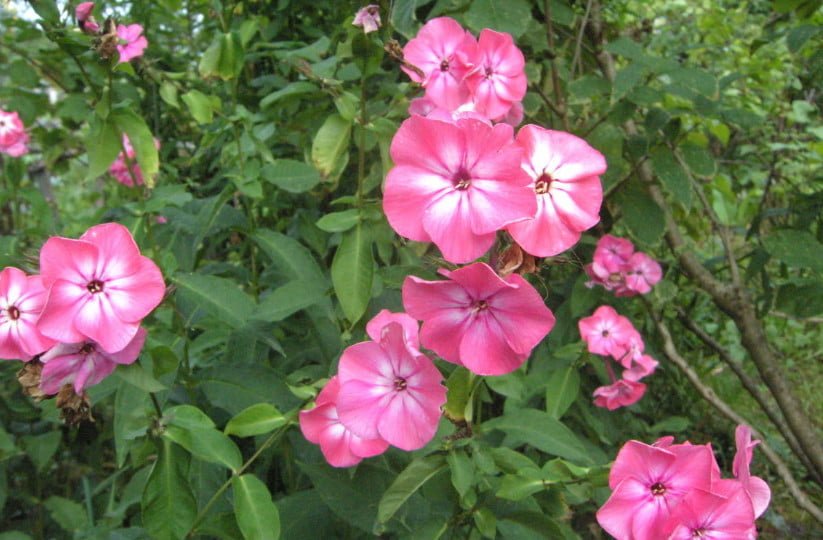
This shrub Phlox has long taken root in our flower beds, giving them a charming rural charm, complemented by a kind of astringent-sweet aroma. The leaves are oval, with a length of 3-15 cm Flowers are fragrant, white and from light to dark purple colors; small, with a diameter of 1.5-2.5 cm, collected in paniculate inflorescences fragrant; bloom before September. There are early, medium and late varieties.
What Phlox paniculata likes
- lighted location;
- loose fertile soil;
- regular watering in hot dry summer;
- soil loosening, mulching;
- fertilizing with complete mineral fertilizer every 2 weeks.
What Phlox paniculata doesn’t like
- excess moisture;
- excess nitrogen;
- diseases: leaf spotting, powdery mildew, rust, curly, stem nematodosis, cracking of the lower part of the stem;
- pests: Agromyzidae, Forficula auricularia, Philaenus spumarius.
The placement of Phlox paniculata in the country
It is luxurious in flower beds, where it creates a special fragrant aura of discreet luxury. Effective on in groups.
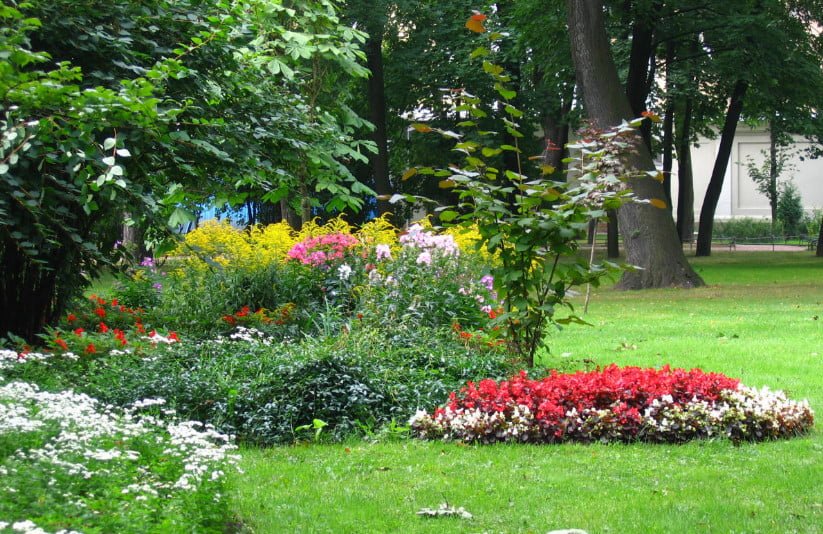
3 facts from the life of Phlox paniculata that you might not know:
- with sweet-tart flavor Phlox is associated an Indian legend which tells about love Cabotage boys and girls Manikata who stabbed himself with a knife, so as not to be captured by a hostile tribe. Cebotech avenged the death of his beloved, and her memory began to wear the amulet with fragrant phloxes — flowers of their love;
- translated from the Greek Phlox means flame; the name of the plant gave the famous Carl Linnaeus-the father of Botanical taxonomy;
- the paniculate Phlox suffers greatly due to the humidity of the surface air layer, which stimulates the development of diseases.
Zinnia elegans
Zinnia elegans— another luxurious representative of the family Asteraceae, captivating beauty of flowering in August.
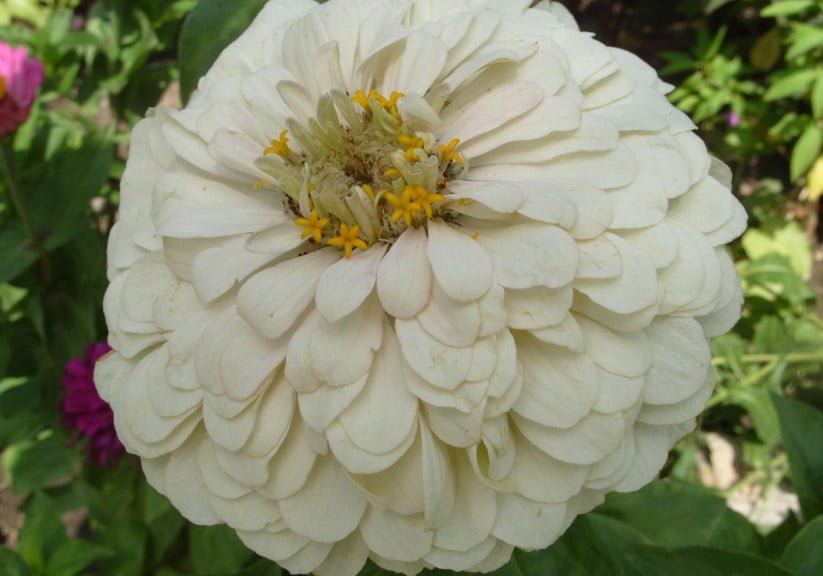
This is a Mexican prima; its hybrids are common in culture. Recently, it was not welcomed: it was quite high, bloomed like a lifeless large buds. Maybe that’s why, because of her “coldness”, a zinnia called in the military — major. This name is not suitable for modern varieties of elegant zinnia: the plant has become more compact, low, inflorescence significantly reduced in size.
What Zinnia elegans likes
- light;
- It is warm;
- dry fertile soil.
What Zinnia elegans doesn’t like
- wet cool summer.
The placement of Zinnia in the country
It is good in various landscape flower beds, which gives a southern flavor. Low-growing varieties suitable for flower borders.
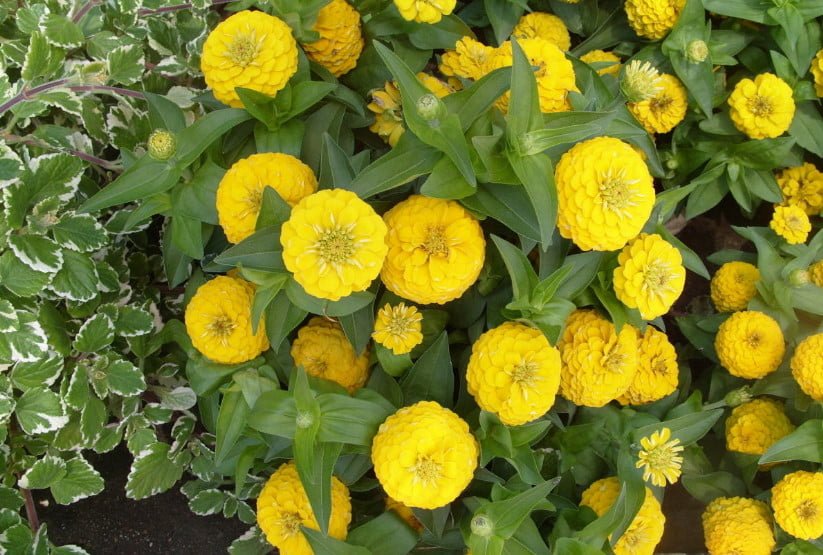
2 facts from zinnia’s life that you might not know:
- the generic name of this August beauty is associated with a German Professor from Göttingen-I. Zinn;
- sometimes also grown Zinnia haageana.
I accidentally put in the end of the post dot: I offer you, dear users of the site, in the comments to tell about their favorite flowers of August…

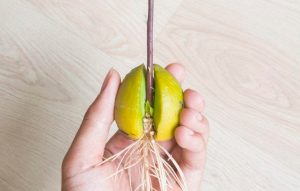

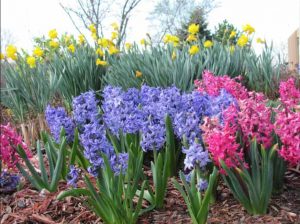
Leave a Reply